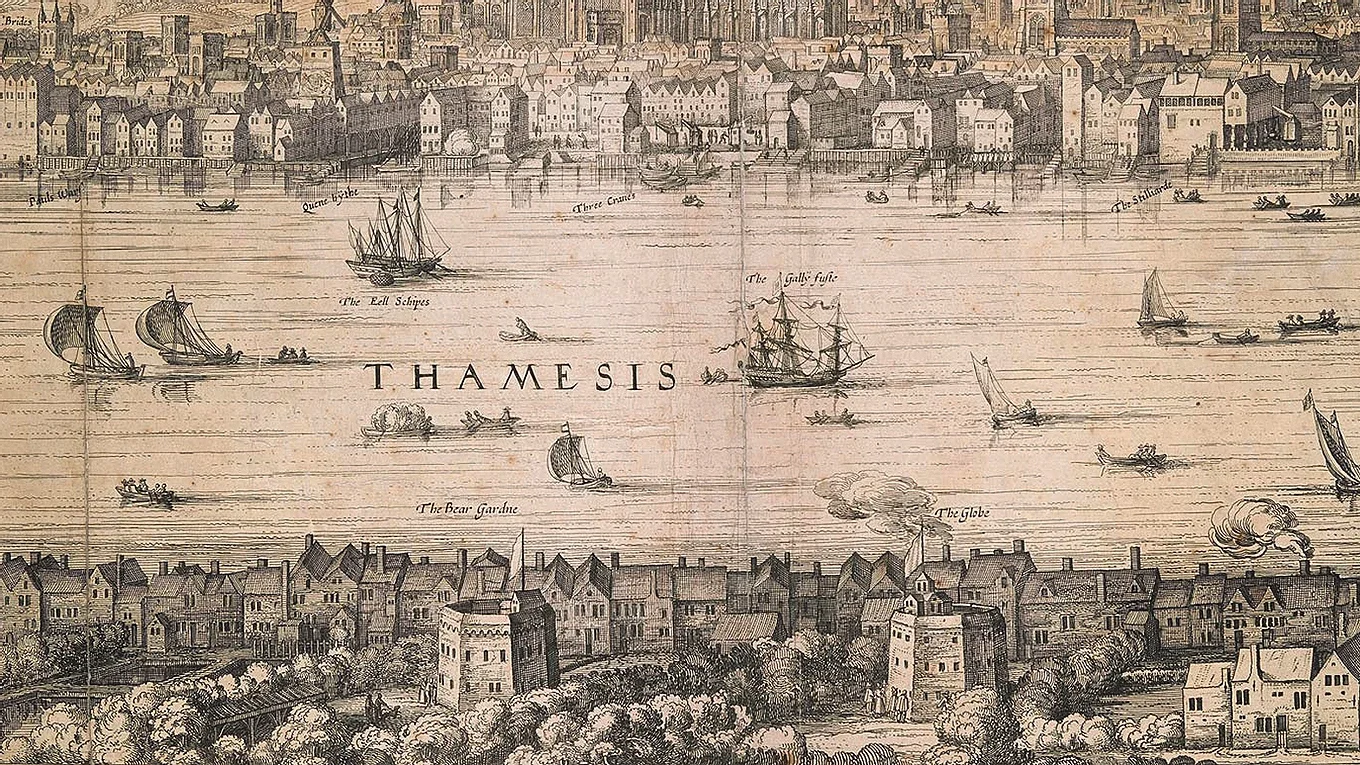London: A Growing Tudor City
If you were living in London during Shakespeare’s lifetime, you would have been in an exciting and huge city. Shakespeare was working there right as the city was beginning to support the arts and entertainments. Trade networks were creating stronger ties with the continent, and the Renaissance had reached England. By the end of Queen Elizabeth I’s reign in 1603, the city’s population was about 200,000.
The population of London was large and diverse. Because there were so many opportunities to work as tradesmen or merchants, people from other European countries were moving there. The city developed different districts for these different professions. For example, Watling Street became the center of the cloth and clothing industry. Some places were named for what you could expect to find- Fish Street Hill unsurprisingly was home to a great deal of fishmongers.
The booming population had a big drawback: overcrowding. The building were often tall, which allowed for more room but created a claustrophobic effect. Some of the houses were timber framed, which could lead to fires, like the Great London fire which occurred several years after Shakespeare’s death. Sanitation was a constant problem. The streets themselves were poorly paved, and the use of pack animals to take goods to market meant that the mud that everyone had to tramp through was quite a smelly mess. But the economic opportunities were so good that Londoners put up with the less than ideal living conditions.
Luckily, London was also a lively city with many entertainments, which we will talk about in another section.
Source: Life in Tudor London- Stephen Porter, History Extra from the BBC

